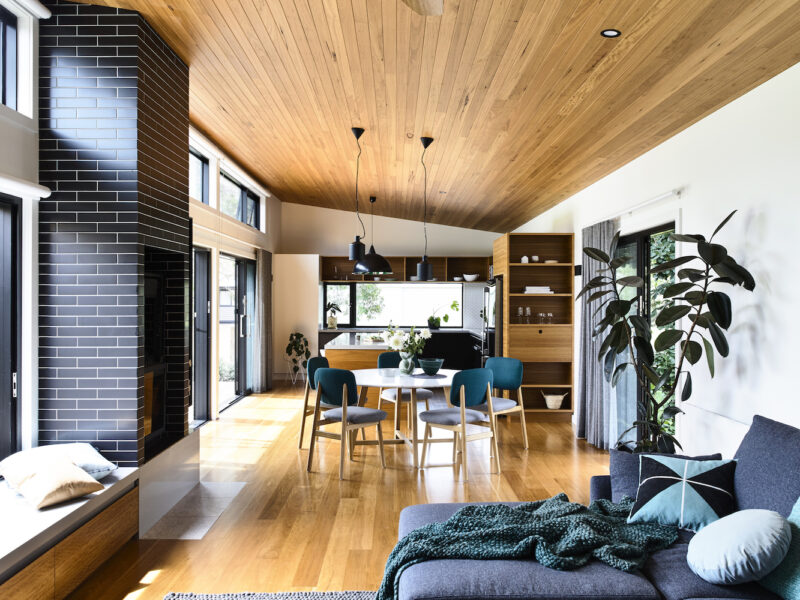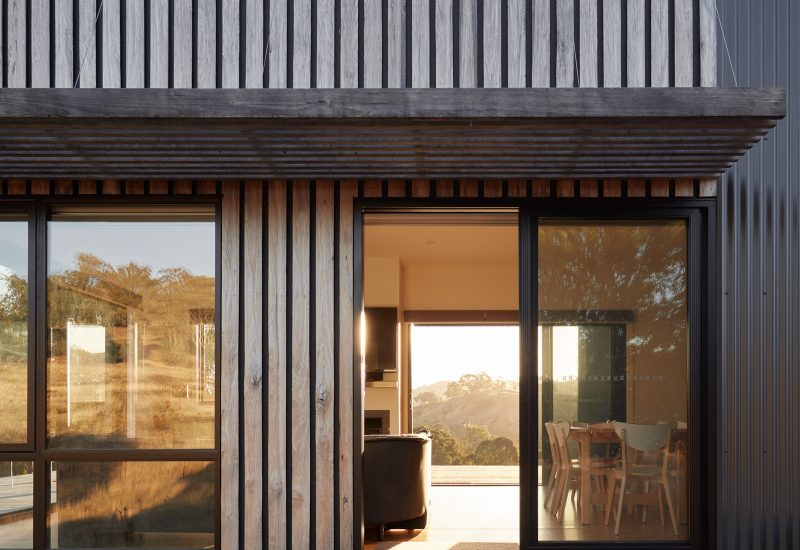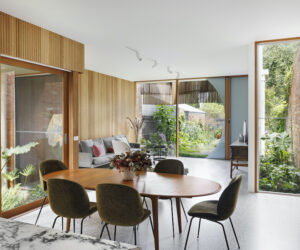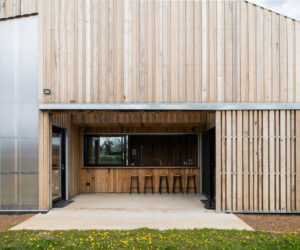Integrating nature and design, Archiblox brings the outdoors in with Tasmanian Oak floors
Integrating nature and design, Archiblox brings the outdoors in with Tasmanian Oak floors
Imagine waking up every morning surrounded by a scene of minimal, natural serenity. As you blink open your eyes taking in the first glimpses of the day, you’re enveloped by a subtle glow as the rising sun reflects on the warm Tasmanian Oak timber floors throughout the space. Looking around the intentionally minimal but thoughtfully designed bedroom, touches of natural materials are everywhere, from the inviting leather armchair in the corner to the cool grey stone peeking out from the bathroom- all touches that you’ve helped handpick from a sustainable source. The inherent purity of your home’s surroundings creates a sense of peace and calm as you ease into your day. While this may sound like a distant dream for many future home owners, there’s one design firm that is bringing this sustainable and beautiful architectural dream into reality for Australian’s, one prefabricated modular home at a time.
Biophilic beauty
Fourth generation builder, second generation architect and first-generation manufacturer Bill McCorkell, is the Founding Director of ArchiBlox, Australia’s leading architecture-building company specialising in biophilic sustainable design and prefab construction. Based in the suburbs of Melbourne, Archiblox closely follows a set of design principals that connects people with nature through sustainable prefabricated design. With homes built in as little as 12-20 weeks, Archiblox’s ‘Smart Range’ of residential home designs come with a standard inclusion of 14mm thick solid Tasmanian Oak floors.
“Material is very important to us in the design process and Tasmanian Oak matches the standard we look for in all of our material selection. It’s elegant, resilient, ages well and has an honest quality to it which makes it a natural fit to include in all of our homes floors,” explains McCorkell
While Tasmanian Oak flooring comes as a standard across their residential designs, it’s often implemented into other areas of the home as well.
“Tasmanian Oak is simplistic, continuous and has a beautiful soft grain that’s brought out when any stain is applied to it. Beyond being used as flooring in our residential designs, it’s often used in joinery, staircases, handrails, and cladding. When used as the primary or sole species in a home, it creates a consistent and polished look,” says McCorkell.
Taking a stand on sustainability
As the request for the specification of sustainable materials in new home builds increases, Archiblox is at the forefront of aligning themselves with equally innovative and sustainable partners to ensure that they can not only talk the talk but walk the walk.
“We’re constantly looking at certifications when we partner with eco-friendly suppliers and when it comes to timber, we’re looking for Certification, which really allows for best practice.
“Timber is innately sustainable as is holds sequestered carbon. Using sustainable wood allows us to give back to the world and helps manage our carbon footprint. To do our part to help ensure this beautiful resource is available for future generations, we’ve recently joined the Plant-a-Tree program, in partnership with Carbon Neutral, a carbon solutions provider and reforestation developer, having donated 11,000 trees to the Yarra Yarra Cooridor, which will not be harvested for at least 100 years,” says McCorkell
McCorkell says design and sustainable materials shouldn’t be a privilege, but something that is accessible and a pleasure for everyone to enjoy. To help aid this idea, McCorkell says prefabricated modular homes are the solution and the way of the future.
“Our innovative process from design to completion is a simple and enjoyable collaboration that allows the client to be a part of the project at each phase and creates a really nice transparency and trust. The best part of every job is when clients walk into their new home and go ‘wow, this is amazing’ and we’re working to make this type of strong emotive response to design accessible to more Australians.”





